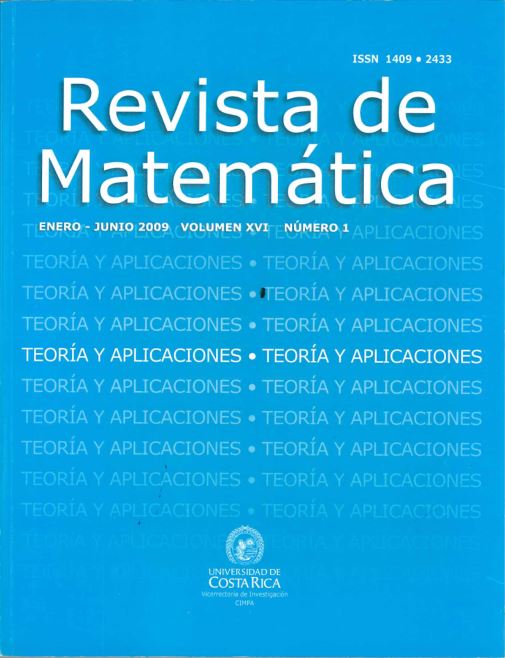Abstract
We posed the problem to obtain the closure relation for the Reynolds equations. And like secondary target, to obtain analytical expressions for the Reynolds stress. Showing its jump of discontinuity like expression of the rupture of the symmetry; the one is interpret by us as a jump in the index of occupation of the space. Our main result consists of which the Reynolds stress is expressed like the fractional derived one from the average velocity.
Being the order of the derived one index of space occupation; what the Reynolds equations transform into differential integral equations. We formulate a model of fractional Prandtl where the squared root of the Reynolds stress depends of the fractional derived one from the average velocity and the model of Prandtl is recovered when the fractional derived one tends to the whole of value. A regularizated transition appears
between velocity of the inertial sub-layer and the viscous and the constant of Nikuradse is obtained like the hydraulic equivalent of the Euler’s constant, who measures the reason of the two scales. We analyze the Reynolds equations for a flow between two planes parallels, through an equation of stationary Fokker-Planck. The velocity profile for the viscous sub-layer is obtained as much; like for the inertial sub-layer. The fluid displays a transition of second order that is pronounced, at level macro, as a jump of discontinuity of the Reynolds stress in as much parameter of order, with rupture of the symmetry; and at micro level, as a jump in the index of occupation of the space.
References
Ahmadi, G. (2005) “Review of turbulence”, Clarkson U., (http://www.clarkson.edu/projects/crcd/me637).
Arfken, G. (1985) Mathematical Methods for Physicists, 2nd ed. Academic, New York.
Bluman, G.W.; Kumei, S. (1989) Symmetries and Differential Equations. Springer-Verlag, Berlin.
Brokate M.; Sprekels, J. (1996) “Hysteresis and phase transitions”, Applied Mathematical Sciences 121 Springer, New York, pp. 357.
Chen, S.; Foias, C.; Holm, D.; Olson, E.; Titi, E.S.; Wynne, S. (1998) “Camasa-Holm equations as a closure model for turbulent channel and pipe flow”, Physical Rev. Lett. 81(24) 5338–5341.
Chen W., (2006) “A speculative study of 2/3-order fraccional Laplacian modeling of turbulence: Some thoughts and conjectures”, Chaos 16, 023126.
Courant, R.; Hilbert, D. (1989) Methods of Mathematical Physics, Vol I. John Wiley & Sons, New York.
Doob J.L. (1960) Stochastic Processes. John Wiley & Sons, New York.
Fefferman, C.L. (2000) “Existence and smoothness of the Navier-Stokes equation”, Princeton University, Department of Mathematics, Princeton, NJ08544-1000, May 1.
Holmer, J. (2005) “The initial-boundary problem for the Korteweg-deVries equation”, arXiv:math/0507168v1 [math.AP].
Hörmander, L. (1983) The Analysis of Linear Partial Differential Operators I. Springer-Verlag, Berlin.
Klewicki, J.; Fife, P.; Wei, T.; MacMurty, P. (2007) “A physical model of the turbulent boundary layer consonant with mean momentum balance structure”, Phil. Trans. R. Soc. A 365: 823–839.
Krasnov, M.; Kiseliov, A.; Makarenko, G. (1982) Ecuaciones Integrales. Editorial Mir, Moscú.
Levi, E. (1989) El Agua Según la Ciencia. Conacyt, Ed. Castell Mexicana, México.
Mainardi, F.; Pagnini, G.; Gorenflo, R. (2007) “Mellin transform and subordinate laws in fractional diffusion processes,” arXiv:math/0702133v1 [math.PR].
Meerschaert M; Mortensen, J.; Wheatcraft, S. (2005) “Fractional vector calculus for fractional advection-dispersion”, Report University of Ontago, Dunedin 9001, New Zeland.
Mercado J.R. (2008) “La ecuación de Navier-Stokes y multifractales”, Revista de Matemática: Teoría y Aplicaciones 15(1): 49–72 .
Mercado J.R. (2007) “Esfuerzos de Reynolds y simetrías”, VIII Congreso Internacional de Ingeniería Hidráulica, ISBN 978-959-247-036-1. Isla de la Juventud, Cuba.
Mercado, J.R.; Lázaro, P.; Brambila, F.; Fuentes, C. (2002) “Aproximación fractal para los semivariogramas de los niveles freáticos”, Revista de Matemática: Teoría y Aplicaciones 9(2).
Mercado, J.R.; Brambila, F. (2001) “Problemas inversos en las ecuaciones de Fokker-Planck”, Aportaciones Matemáticas, Serie Comunicaciones 29: 201–222.
Mercado, J.R.; González, A.; Brambila, F. (2000). “Problemas inversos en las ecuaciones de Navier-Stokes”, XVI Congreso Nacional de Hidráulica, Morelia, México: 1067–1072.
Olver, P.J. (1993) Applications Lie Groups to Differential Equations. Springer-Verlag, Berlin.
Risken, H. (1989) The Fokker-Planck Equation. Springer-Verlag, Berlin.
Rouse, H. (1946) Elementary Mechanics of Fluids Dover, New York.
Sommerfeld, A. (1950) Mechanics of Deformable Bodies. Academic Press, New York.
Sotelo, G. (1991) Hidráulica General, Vol. 1, Fundamentos. Noriega Limusa, México.
Tarasov, V.E. (2007a) “Fractional derivative as fractional power of derivative”, International Journal of Mathematics 18: 281–299.
Tarasov, V.E. (2007b) “The fractional Chapman-Kolmogorov equation”, Modern Physics Letters B 21: 163–174.
Tarasov, V.E. (2005) “Fractional Fokker-Planck equation for fractal media”, Chaos 15.
Temam, R. (1984) Navier-Stokes Equations, Theory and Numerical Analysis. North-Holland, Amsterdam.
Wei, T.; Willmarth, W. (1989) “Reynolds-number effects on the structure of a turbulent channel flow”, J. Fluid Mech. 204: 57–95.
